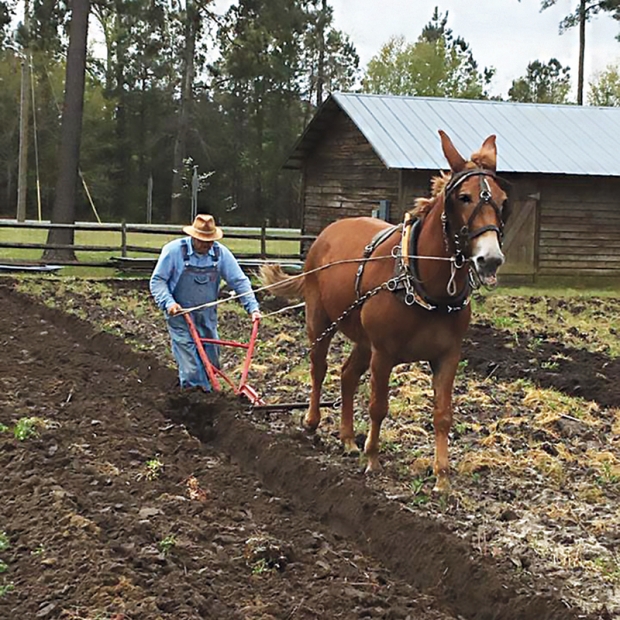From thriving Native American communities to failed Spanish settlements to the pirate trade and wartime activities during the Revolutionary War, Civil War and World War II, the Grand Strand’s history is rich (if you know where to dig). While Myrtle Beach as a municipality is relatively young (1938) compared to Conway (1773), Georgetown (1729) and Charleston (1670), its heritage as a fishing village turned tourist mecca is still unfolding today. For staycationers, there’s nothing like learning a bit more about the place you call home. Here’s how.

Museums and Walking Tours
Horry County Museum
805 Main St., Conway
Opened in 2014 in the Historic Burroughs School (circa 1905), this 10,000 square feet of exhibit space grows a little each year and highlights the fascinating history of Horry County in what was once the wealthiest of the 13 original colonies. With ever-changing exhibits, be sure to visit the military room where you’ll learn about the German POW camps that dotted Myrtle Beach during WWII. www.horrycountymuseum.org
L.W. Paul Living History Farm
2279 Harris Short Cut Road, Conway
Just a few miles west of Main Street, out into the rural countryside of Horry County, the L.W. Paul Living History Farm is a working farm documenting the one horse family farm and homestead circa 1900–1955. Like its in-town museum counterpart, the farm is free to visit and hosts countless busloads of school children and visitors who can experience, firsthand, life in Horry County just a few generations past. A small staff and a group of volunteers maintain the farm and its many animals. They are on-hand to answer questions and conduct demonstrations. www.horrycountymuseum.org
North Myrtle Beach Area Historical Museum
799 Second Ave. N.
After closing for Hurricane Matthew repairs from 2016 to 2017, the North Myrtle Beach Museum reopened with the same dedication to preserving the history of all the small communities that now make up the city of North Myrtle Beach and beyond, including Longs, Loris, Little River and Wampee. Loaded with photographs and exhibits, the small, easy-to-navigate museum is preserving the history of the North Strand for current and future generations. northmyrtlebeachmuseum.com

Conway Visitor Center
428 Main St., Conway
Wear your walking shoes and plan to get a little fresh air and history wrapped up into one activity with the very popular self-guided historic downtown Conway walking tour. Stroll along tree-lined streets and visit sites dating back to the early 1800s, including the first city hall built by Robert Mills in 1884, the same man who designed and built the Washington Monument. The “Guide to Some of our Oldest Citizens” tour includes locations and stories of 10 majestic Conway live oak trees. conwayalive.com
Myrtle Beach Boardwalk Historical Markers
First Avenue North to 14th Avenue North, Myrtle Beach Oceanfront
In 2016, the city of Myrtle Beach unveiled 11 new historical markers along the Myrtle Beach Boardwalk, adding to the existing ones for a total of 24. Learn about how Myrtle Beach got its name, the devastation of Hurricanes Hazel in 1954 and Hugo in 1989, the history of four separate Pavilions built on the oceanfront beginning in 1902, area salt works and much more.
--------
From its lucrative and brutal indigo and rice plantation history, Revolutionary War naval scuffles, and British occupation to its importance as a seaport, Georgetown (South Carolina’s third oldest city) is a history buff’s dream come true. An official port of entry in 1732, Georgetown is full of great museums ready to give you history lessons in the maritime industry, its role as the number one rice exporter in the world, the heritage of the Gullah people and more. Whether casually strolling throughout the Historic District’s many old businesses and 60 antebellum homes or a serious student of early American life, Georgetown is the Grand Strand’s oldest and most venerable city.
South Carolina Maritime Museum
729 Front St., Georgetown
Opened in 2011, the South Carolina Maritime Museum celebrates the long history of the state’s shipping industry. Georgetown is the state’s second largest shipping port behind Charleston. Loaded with artifacts, documents, photographs and interactive displays, the museum also sponsors the Wooden Boat Show each fall, as well as sponsoring youth sailing camps. scmaritimemuseum.org

Rice Museum
633 Front St., Georgetown
Locating the iconic Georgetown Clock Tower (1842) is easy, and it will lead to finding the Rice Museum in the two-story building just behind the tower. Here you’ll see a permanent collection of artifacts, dioramas, artwork, maps and much more, all helping tell the story of the region’s massive rice industry. You’ll also find the hull of the 50-foot Brown’s Ferry Vessel (1750s), widely believed to be the oldest Colonial-era vessel ever found. ricemuseum.org
Gullah Museum
123 King St., Georgetown
Story quilts, sweetgrass baskets, artifacts and guided tours surrounding the Gullah culture and the African experience await the staycationer wishing to learn the whole story of the South Carolina Lowcountry. Tours (by appointment only) visit slave markets, once segregated beaches and historic Charleston. gullahmuseumsc.com

Kaminski House
1003 Front St., Georgetown
First owned by a wealthy sea merchant family, this antebellum Georgian-style home built around 1769 became especially famous when Julia and Harold Kaminski purchased the house in 1931. Harold Kaminski was a former mayor of Georgetown and served in the U.S. Navy during WWI and WWII, including surviving the attack on Pearl Harbor in 1941. When widow Julia died in 1972, she willed the home and its collection of English and French antiques to the city of Georgetown to serve as a museum. kaminskimuseum.org
PHOTOS BY GILLIAN CLAIRE, PAIGE SAWYER PHOTOGRAPHY, BILL WOODWARD AND COURTESY OF THE L.W. PAUL LIVING HISTORY FARM AND THE SC MARITIME MUSEUM